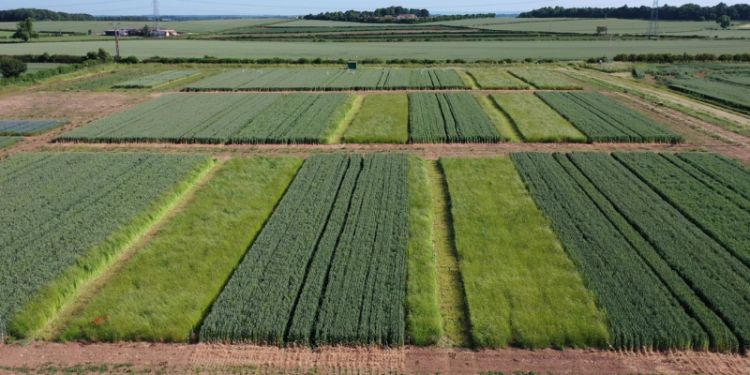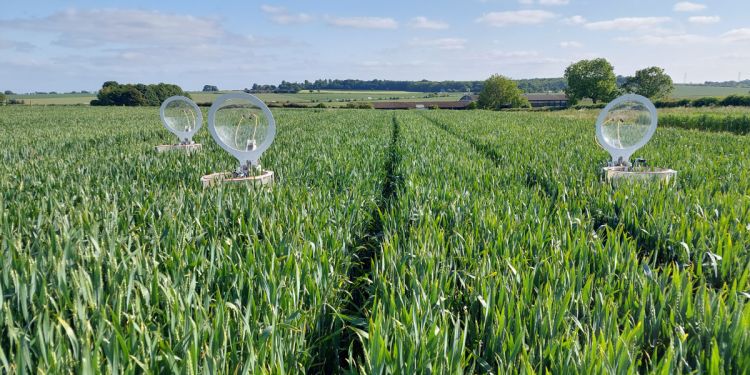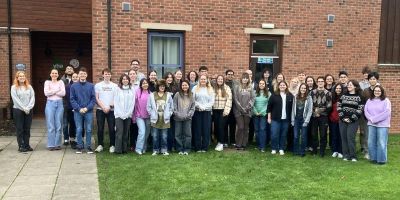What can soil teach us about sustainability?

Researchers across the university, including Dr Ruth Wade, Research Fellow in the Faculty of Biological Sciences, are trialling how regenerative agriculture impacts soil, crops and the environment.
Regenerative agriculture is a farmer-led movement which has the aim of improving soil health by incorporating five key principles into any on-farm management decision.
The principles are:
1. Minimise soil disturbance
2. Keep the soil covered
3. Maintain a living root all year round
4. Increase diversity
5. Integrate livestock
Recently there has been much interest from researchers, policymakers and retailers in the potential of regenerative agriculture to not only produce food and support environmental restoration but also in its potential to increase carbon in the soil, contributing to achieving net zero targets.
But there is a lack of evidence-based practice, making it challenging for farmers, businesses and policymakers to make well-informed decisions.
The FixOurFood programme, funded by the UKRI Strategic Priorities Fund, and supported by and a network of university researchers including Professors Steven Banwart, Pippa Chapman, and Lisa Collins through the Global Food Environment Institute (GFEI), is a multi-disciplinary research programme which aims to transform the Yorkshire food system.
It was developed following feedback from local farmers that unbiased evidence-based practice and farmer-led knowledge transfer would support them to improve their business practice.
Regenerative agriculture in practice
As part of the study, Dr Wade is trialling what happens to soil when a combination of different regenerative agriculture principles and practices are applied.
At the University of Leeds smart farm, we’ve installed a replicated large plot trial measuring the impacts of different combinations of regenerative agriculture principles and practices on the soil, crop, greenhouse gas emissions and profit to the farmer.
The trial is in its second year and features 7 farming systems using different extents of regenerative agriculture practices.
The first year of the trial measured the impact of these different farming systems on winter wheat. The wheat was harvested in August and the trial is now comparing different over winter covers.
The ‘conventional’ plots use standard farming practices such as ploughing, sowing a single wheat variety, using inorganic fertiliser and leaving the soil bare over winter.
Other plots have five species or 10 species ‘covers crops’ - crops that are planted to cover the soil over winter. The crops have different sized and depths of roots, and the team are measuring their impact on soil structure, nutrient availability and biodiversity. Dr Wade said:
Cover crops are designed to try and improve the soil structure. They do this by reducing compaction, helping to bind soil particles, improving water infiltration, and supporting soil biodiversity over the winter before we go into the spring crop next year.
The conventional and cover crop plots are being compared with other plots, such as a ‘living mulch’, a mix of legumes and herbs which were sown into wheat, as well as a continuous herbal ley – a GS4 Cotswolds mix comprises of different varieties of grasses and herbs. The team will also trial how terminating the cover crops with herbicides or introducing resident sheep could aid soil quality.
And the study is already producing evidence-based results.
You can already see the improvement in soil structure and its colour. You’ve got a much better crumb structure, better water infiltration and more vegetation to support biodiversity.
In this video, Dr Wade shows the difference between conventional soil and soil which has been cultivated using regenerative agriculture principles - in just one year.
A testbed for net zero
Recent figures suggest that the global environmental impacts of farming are huge.
That’s why the trial is also using innovative technology to reveal new insights in a step towards carbon-zero agriculture.
Chambers that measure greenhouse gases, such as carbon dioxide, nitrous oxide, and methane, all year round scatter the fields, while sensors, provided by agri-tech company Paul-Tech, calculate soil temperature and moisture.

In this video, Dr Wade and Professor Pippa Chapman, in the School of Geography, explain more about the pioneering technology at the smart farm.
Translatable research
A crucial aspect of the trial is ensuring that the conditions mirror real-world farming as much as possible.
It’s really important that, as researchers, we replicate the study in the most realistic way possible. That’s why we run the smart farm like any other farm and the trial has been co-designed with local farmers, agronomists and allied organisations. This will ensure all of our learnings can support farmers in the best possible way.
If you’d like to keep up to date with our research in food and climate you can:
• Follow us on X
• Become a member of GFEI to receive updates on their activities and receive invitations to their events. You can also follow them on LinkedIn, X and Bluesky
• Sign up for the Priestley Centre mailing list
• Follow the Priestley Centre on X, LinkedIn and YouTube




